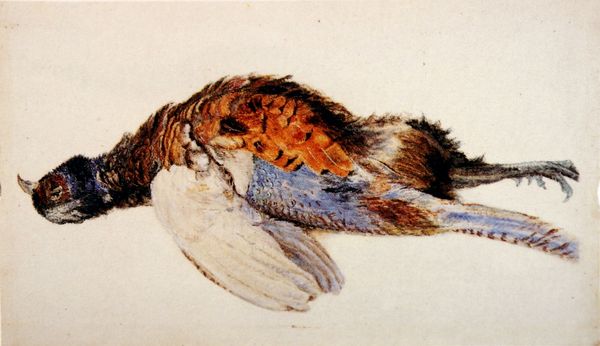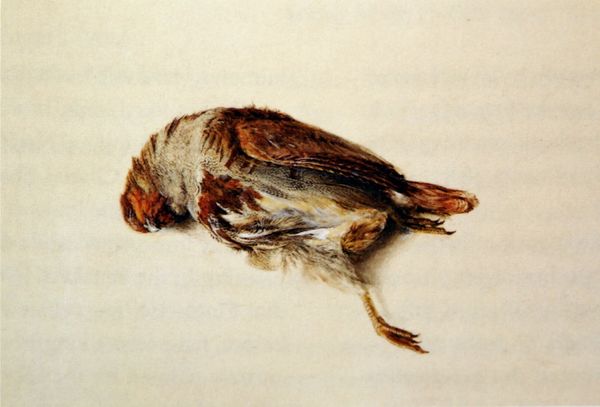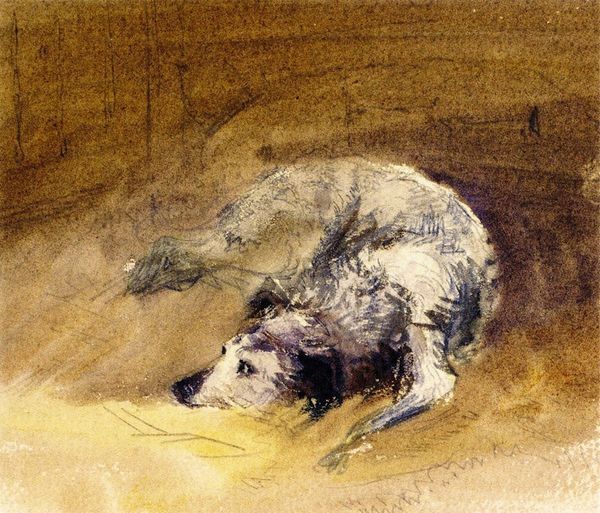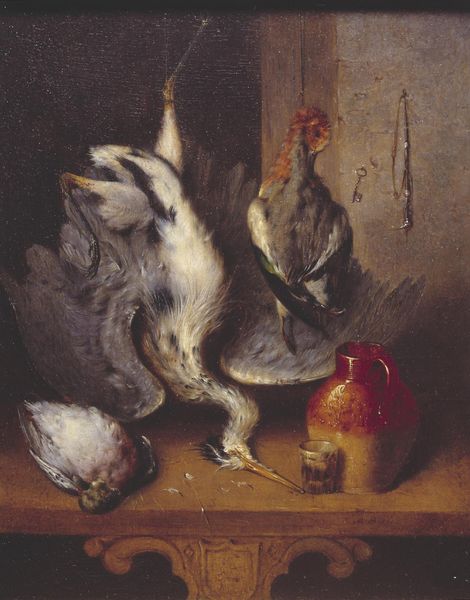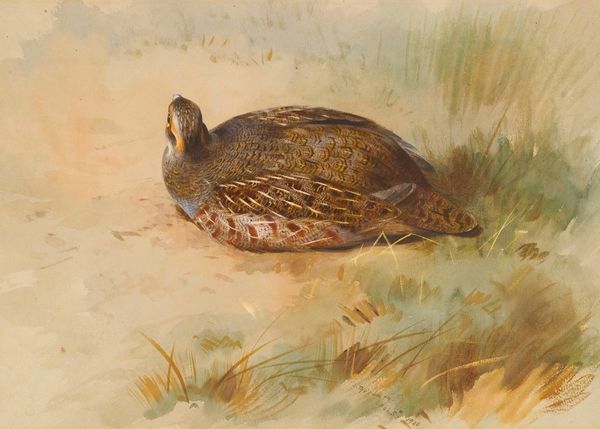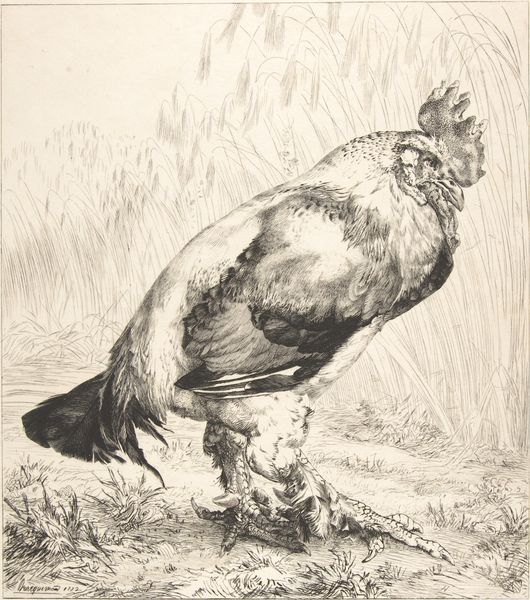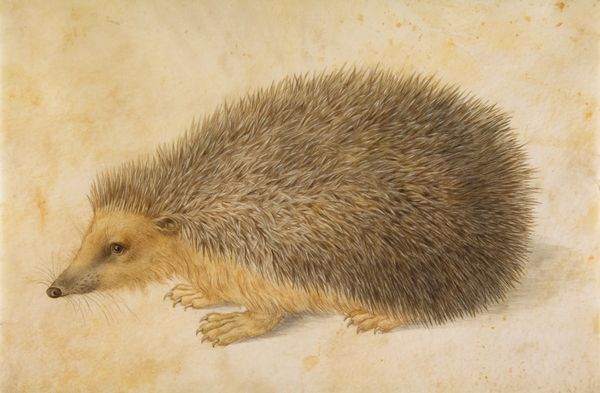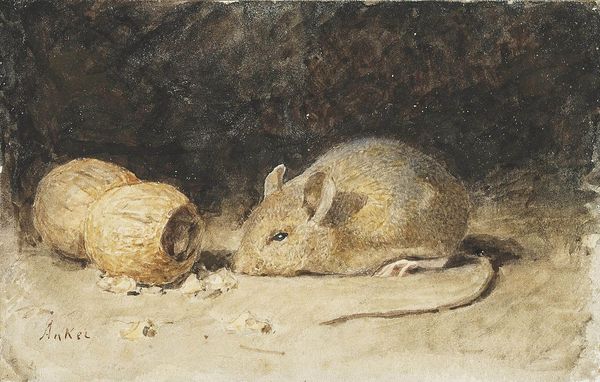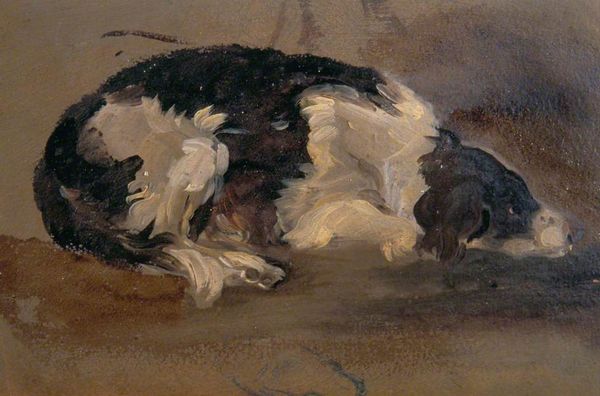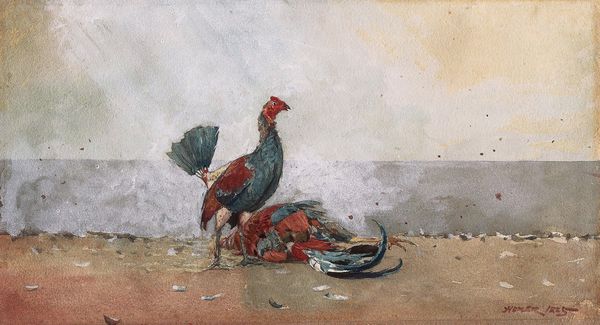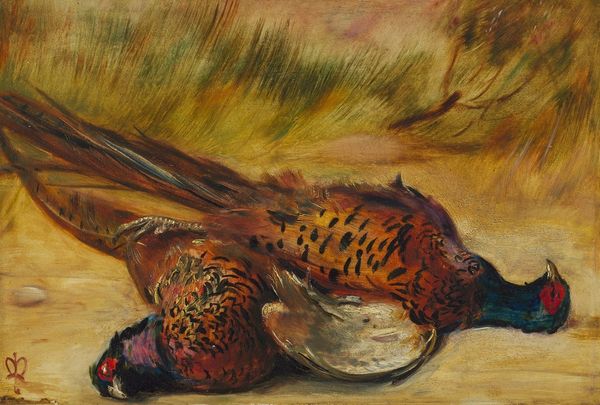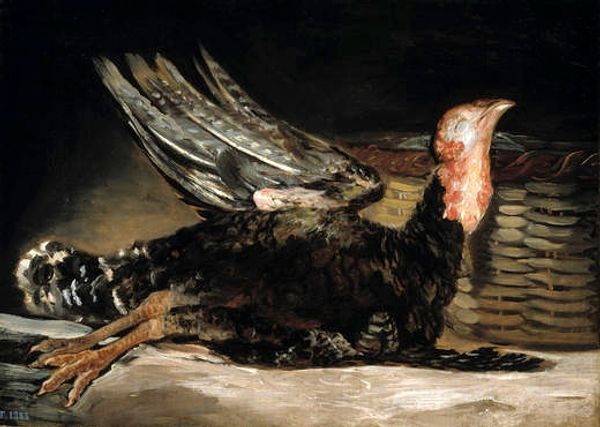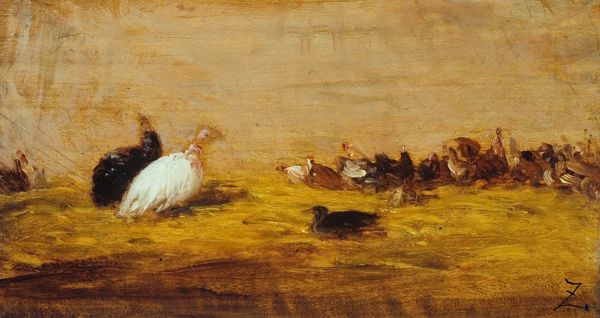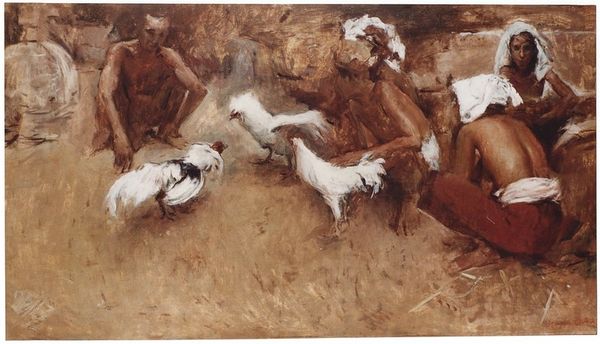
painting, oil-paint
#
portrait
#
animal
#
painting
#
oil-paint
#
animal portrait
#
pre-raphaelites
Copyright: Public domain
Curator: William Holman Hunt, associated with the Pre-Raphaelite movement, is believed to have made this study of what's often called *John Ruskin's Dead Chick*—the date of execution isn't confirmed, but it's oil on canvas. It's held in a private collection. Editor: The chick looks incredibly still. A somber mood permeates the canvas. The earth tones further ground it, amplifying the starkness of death. Curator: The painting possesses a sense of meticulous observation, common among the Pre-Raphaelites, mirroring their commitment to representing nature with unwavering accuracy. Death and the cycle of life frequently served as profound subjects, particularly when viewed through a spiritual lens. What could a seemingly small creature symbolize here? Editor: In this intimate portrayal of mortality, class, gender, and human labor are completely invisible. The focus centers on nature. Is it because the death of non-human beings lacks the sociopolitical ramifications and cultural constraints of human mortality, making them safer subjects of artistic contemplation? Is it supposed to evoke a detached reflection on universal mortality rather than serving as a critical engagement with social inequalities? Curator: Death, throughout the history of iconography, carries complex associations: it's a full stop, of course, but it is also a threshold and a mystery. Considering Ruskin's personal association, the study can reflect themes of vulnerability, transience, and perhaps the fragility of beauty itself, even within a broader social commentary. Editor: This painting might provoke a spectrum of feelings among viewers, ranging from empathetic grief to a kind of analytical detachment. For instance, thinking about what we "permit" in our culture around images of death… Curator: The visual elements echo emotional complexity. Editor: Looking at the artwork forces me to reflect on my own emotional response and the ways in which our cultural conditioning shapes how we deal with death. Curator: Examining artworks through varied cultural lenses undoubtedly enhances their value, which allows us to really come to terms with what it is trying to say. Editor: I find that focusing on its contextual factors has opened up discussions that prompt personal introspection, social awareness, and, potentially, more justice.
Comments
No comments
Be the first to comment and join the conversation on the ultimate creative platform.
